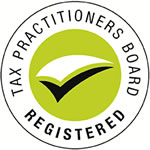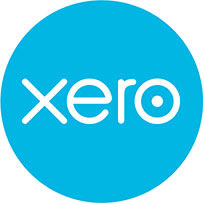What Our Clients Say
Success Stories
Click Here to learn more ►For business owners aiming for growth and stability, keeping track of critical financial metrics is a good basis for deciding strategy.
Here are five essential financial metrics that are of value to most leaders. They can, of course, be supplemented by other metrics which are especially suited to your business.
1. Revenue Growth Rate
This is the most straightforward indicator of business health. Tracking monthly, quarterly, and yearly revenue growth demonstrates market demand, and is a basis for future planning.
For example, a software-as-a-service (SaaS) company tracked the revenue growth rate over the past three years. In the first year, revenue grew by 20% due to the launch of a new product feature. In the second year, revenue growth accelerated to 35% as the company expanded into new markets. However, in the third year, revenue growth slowed to 10% as competition intensified.
By closely monitoring these trends, the company was able to adjust its strategies, focus on customer retention, and develop new products, ensuring sustained growth and market relevance.
2. Profit Margins
It is not just about how much money is coming in, but how much is retained as profit. Understanding gross, operating, and net profit margins can pinpoint where costs can be trimmed, or prices adjusted.
For example, a retail chain increased its gross profit margins by 5% through strategic pricing adjustments and inventory management. This improvement led to a 20% increase in net profit, allowing the company to reinvest in store renovations and customer experience enhancements.
3. Cash Flow
A business can be profitable on paper but still struggles if cash is not available when needed. Monitoring cash flow ensures there is enough liquidity to cover operational expenses and invest in growth.
For example, a small business improved cash flow by 25% by renegotiating payment terms with suppliers and implementing tighter expense controls. This increased liquidity enabled the business to hire a marketing professional to pursue growth opportunities and expand its market presence.
4. Debt-to-Equity Ratio
This metric provides insight into financial stability. A high ratio might indicate over-reliance on borrowing, while a low ratio suggests a strong equity position.
For example, a manufacturing company reduced its debt-to-equity ratio from 1.2 to 0.8 by refinancing high-interest debt and using excess cash to pay down liabilities. The improved financial flexibility allowed the company to pursue acquisitions and invest in new technologies.
5. Return on Investment (ROI)
ROI measures the profitability of an investment relative to its cost. Calculating ROI for different aspects of the business (e.g. marketing campaigns, equipment purchases, etc.) can help assess the effectiveness of investments and make informed decisions about future investments.
For example, a software company achieved a 300% ROI on its digital marketing campaign by targeting high-value customer segments and optimising ad spending. This resulted in a significant increase in sales and brand awareness, driving long-term customer loyalty and revenue growth.
Keeping these metrics in check can provide invaluable insights into the financial health and growth trajectory of a business. Regularly monitoring and analysing these figures paves the way for informed decisions and a robust financial strategy.
Whether you’re an established business or investor, or just starting out, we’ll make sure you move your business beyond the numbers… while we focus on your growth potential.
When you work with us you will benefit from:
1. Leadership
2. Intelligent Solutions
3. Systemisation and Automation
4. Communication in simple terms
5. Business Coaching
6. Smooth Compliance
7. Resourceful Networking


















As accountants, we want our clients to build resilient and successful businesses. That means...
read more >For business owners aiming for growth and stability, keeping track of critical financial...
read more >When is the right time to sell your business? We hear replies ranging from “I don’t plan...
read more >
Level 14, 3 Parramatta Square, 153 Macquarie St, Parramatta NSW 2150
Suite 294,1 Barratt Street Hurstville NSW 2220
grow@wealthpreneur.com
+61 ( 2 ) 8896 6166